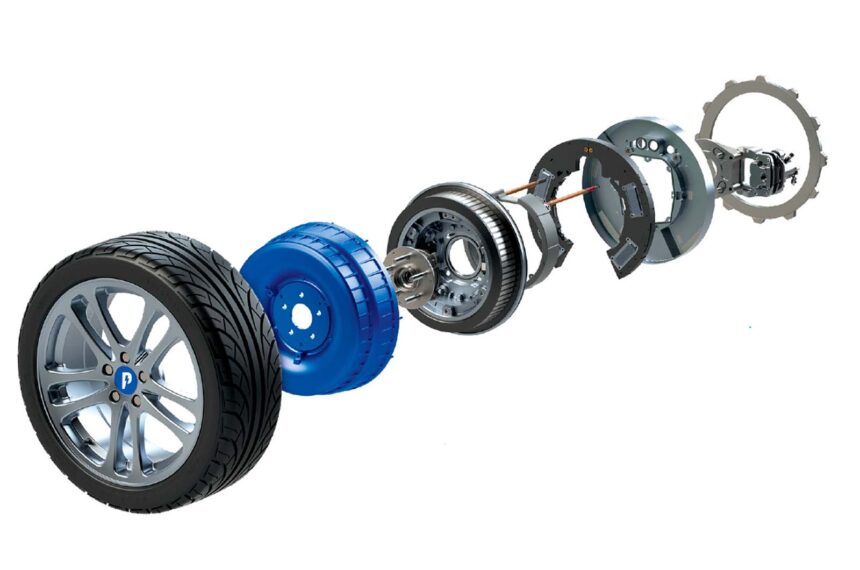In-wheel motors (IWMs) have been a staple in the world of electric propulsion for quite some time. One of the earliest examples of this technology can be seen in GM’s Autonomy concept from 2002. This concept featured a skateboard chassis powered by IWMs, showcasing the potential for this innovative technology. GM even had working demonstrators, such as the Chevrolet S-10 pick-up with IWMs driving the rear wheels and a single motor at the front.
Protean Electric, a company based in Farnham, has been at the forefront of IWM development for the past 15 years. Their latest Gen 5 Proteandrive IWM, the PD18 Gen 5, has recently completed a validation programme and is setting a new industry standard for IWMs. This impressive motor produces 1106lb ft and 138bhp while weighing only 39kg. Two motors in a front- or rear-wheel-drive configuration can deliver peak power of 276bhp, with four-wheel drive offering a whopping 553bhp. The maximum speed achievable with these motors is an impressive 140mph.
One of the main advantages of IWMs lies in their packaging. The entire drive unit fits inside the wheel, including the inverter, which manages energy flow to and from the battery. This compact design allows for more space inside the vehicle, as well as improved efficiency and range due to the absence of traditional drivetrain components.
Protean has addressed concerns about unsprung weight, with independent analysis showing that it is not a significant issue. The company has designed the PD18 for 400V architectures, with an 800V version expected to be available by the end of the year. The PD18 is suitable for use in cars, SUVs, vans, and autonomous pods weighing up to 5.2 tonnes, while the smaller PD16, with 107bhp, is designed for vehicles weighing up to 3.2 tonnes.
In conclusion, in-wheel motors represent a significant advancement in electric propulsion technology. With companies like Protean Electric leading the way, we can expect to see more vehicles equipped with this innovative technology in the near future.






